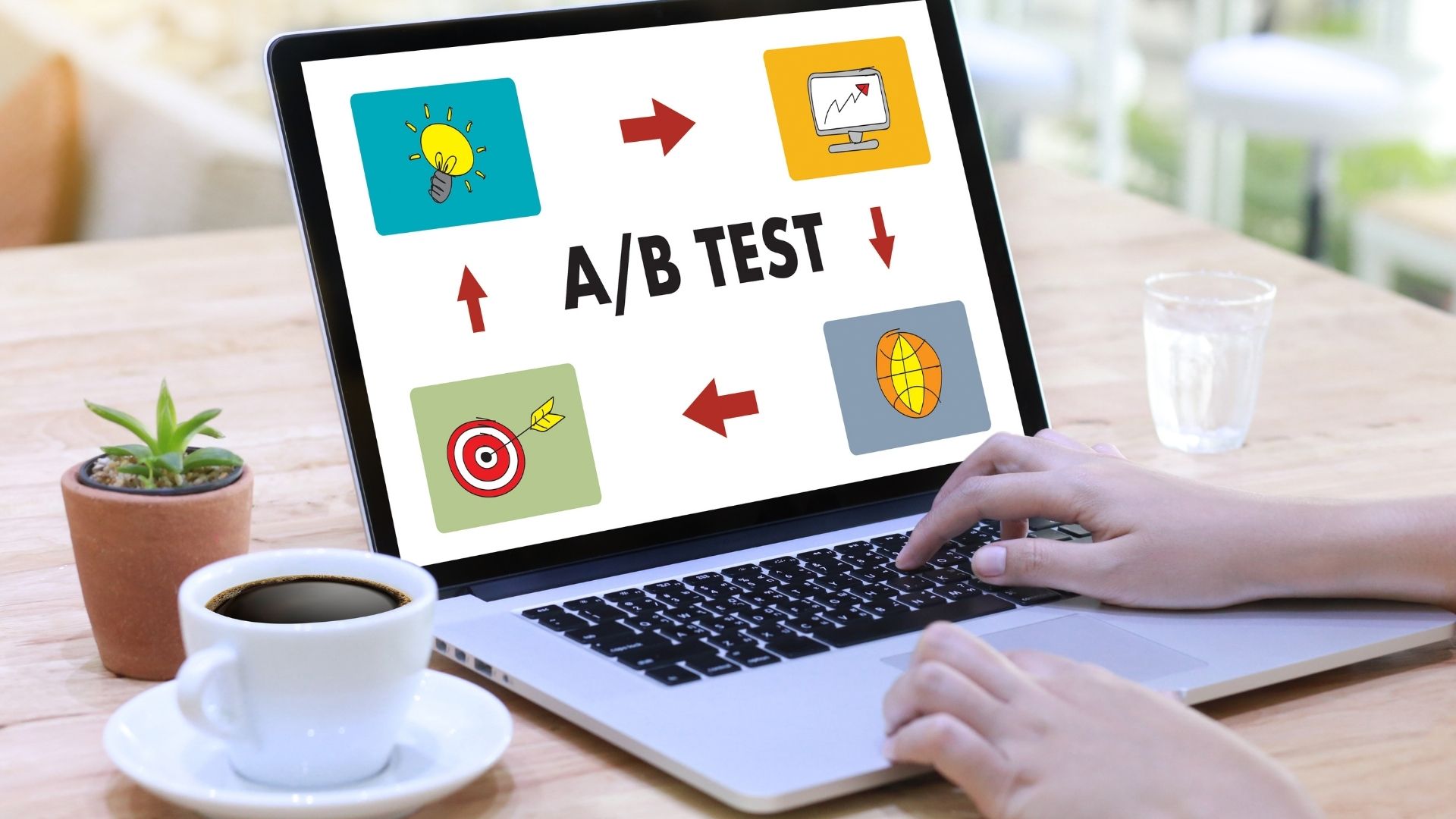A/B testing, also known as split testing, is a tactical experimentation process in which users are shown two or more variations of a campaign variable to determine which variant drives business metrics. A/B testing removes all guesswork from campaign optimization and enables marketers to make data-driven decisions.
In an A/B test, A is the “control” or original test variable, whereas B is a different version of the original variable. After running the test for some time, the version that positively impacts your business metrics is known as the ‘winner.’ Implementing the changes of the winning version on the tested elements will help you optimize your campaigns and increase marketing ROI.
Why should you perform A/B testing?
If you are unhappy with the qualified leads your business gets per month, then it’s time you consider an A/B test for your campaign elements. For example, if you’ve been running Facebook Ads, you can split test different creative designs, copy, and the CTA for your ad. Results from the split testing Facebook exercise will let you know the campaign elements that deliver the best results. With this information, you can optimize your ads to improve your marketing performance and reach customers more effectively.
Figure 1: A/B testing. Source – Towards Data Science
There are many AB testing examples where marketers have improved their campaigns through split testing. The first example is from Strategyzer, who split tested different ad copy and audiences for their Facebook ad campaign. Their first ad looked like this:
Strategyzer paid $4,443 for this campaign in 3 weeks and made only one sale. The poor results forced the company to review the ad copy to see what could be done to improve performance. After reviewing different case studies, they decided to use storytelling to give users a taste of what they stand to gain by joining the event.
Here’s what the improved ad looks like:
By modifying the length and tone of the ad copy, Strategyzer achieved better results. 92 people signed up for the event at an average CPA of $123.45. These impressive results show how important it is to test different campaign elements to figure out what works best for your business. Do the same and take your marketing to the next level.
How to split test
A/B testing is useful for getting maximum value from your campaign strategy. Whether you’re doing small-scale optimization of your email blasts or a large-scale one for your entire sales promotion, split testing will help you identify the best ways to connect with your customers.
Ready to get started? Here’s how to go about it!

Define the goals
Before you start any A/B tests, you need to define the goals for your campaign. What do you want to achieve from all the marketing activities you are running? Do you want to increase sales, boost app downloads, or attract more email subscribers?
Defining your goals early makes your A/B tests and eventual campaign optimization efforts much more focused. You will know which metrics to track and how to determine good campaign performance. You also will notice when things aren’t going according to plan and how to remedy the situation.
Have a control feature
Setting your goals will help you define a hypothesis of what needs to be done to improve performance. To prove this hypothesis, you must create a control feature – the unaltered version of what you are testing.
If you’re testing a landing page, the unaltered version of the page is the control feature. The landing page has the design elements and copy you would typically use.
From there, build a ‘challenger.’ The ‘challenger’ is a variation of the control element with the changes you want to test. If you’re wondering whether adding testimonials to the landing page will make a difference in conversions, create a challenger landing page with customer testimonials.
Start small
For your first split test, focus on something low-cost with minimal risk. Don’t go for the complex tests early on. Instead, start small with minor changes to email newsletters, landing page content, or social media ads. Starting small gives you the benefit of learning what influences specific campaign metrics and performance.

Collect as much data as possible
Timing plays a vital role in your campaign’s results. For this reason, you should let the test run long enough to produce valuable data. Otherwise, it will be difficult to tell if there is a significant difference between the two variants.
Depending on the test you’re running, getting statistically significant results could take hours, days, or weeks. But during this time, collect as much data as possible. Record how much traffic the campaign elements receive. You should also note how many people interacted with the campaign elements during that time.
Measure and adapt fast
After collecting relevant test data, analyze it to determine which variable performs best. Focus on your goal metric more than any other statistic. If you identified leads as your primary objective, don’t get caught up on different metrics like open rate or click-through rate.
Once you identify the better variable, use AB testing software to determine if the results are significant to justify a change. The software will make you more confident about the data your test has produced and empower you to take action based on the result.
Use the findings to optimize your campaigns for better results. If it emerges that a particular CTA design performs better than other variants, adopt it for the whole campaign and drop the poor-performing ones. If you realize your email blasts have a higher open rate when you use numbers in the subject line, you should consider using the tactic in future emails.

Different ways to perform simple split tests for growth marketing
There are different types of split tests you can perform to improve your marketing performance. They include:
Marketing split test
A marketing split test allows you to test different variations of marketing campaigns, such as ad copy, creative, target keywords, audiences, and more. The ad design has a significant impact on your business metrics. Testing different ad components will help you learn how to structure your ads to appeal to your target users. You can try other ad copies and creatives to learn how to communicate with your users.
Marketing split testing also allows you to test the performance of your ads with different audiences. Don’t use guesswork to determine the best audience for your campaign. Instead, show your ads to different audiences and analyze the data to find valuable customers for your business.
Funnel split test
Funnel testing is a testing method that compares multiple related pages that are part of your sales funnel. These tests are similar to A/B tests, but rather than changing a few components of the control page; you form variations of all the pages in your sales funnel.
Users who come across the control page on your site are taken to a specific page, while others on the variant are directed to the corresponding page. This method allows you to try different pathways to improve your sales funnel and get users to make their transactions, subscriptions, submissions, or bookings faster.
Product split test
A/B testing isn’t just for comparing campaign elements. You can also use it to test different product features to find out what works best. For SaaS companies, the slightest change in your product can have a significant impact on your sales. For this reason, you should A/B test new features before rolling them out.

A/B testing is instrumental when it comes to improving your marketing performance. If done correctly with the knowledge you have acquired from this guide, split testing will reduce most of the risks involved when performing an optimization program. You will also improve the user experience by removing all weak links and identifying the most optimized version of your app or site.

Book in a Free Consultation
